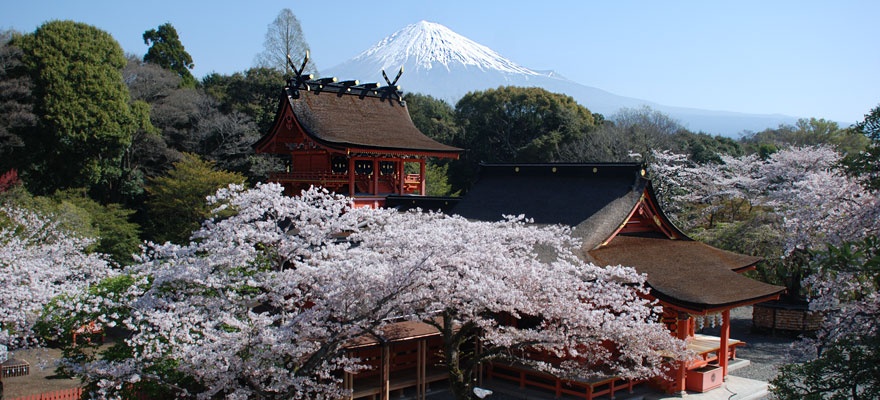3 Ways to Worship Mount Fuji
Mount Fuji, or Fujisan as it is called in Japanese, is an object of faith for Japanese people and a place that their hearts draw support from, as expressed by the official name that it is registered as a Cultural World Heritage Site under: "Fujisan, sacred place and source of artistic inspiration."
The culture of faith relating to Mount Fuji can be generally classified into three types. The first is a faith expressed through actually climbing Mount Fuji (mountain pilgrimage, or tohai), the second is a faith expressed through viewing Mount Fuji from a distance (worship from afar, or yohai), and the third is a faith expressed through creating pictures or literature featuring Mount Fuji. What follows is an explanation of two of these types—mountain pilgrimage and worship from afar—provided by Yukie Takeya, Professor Emeritus of Takushoku University and leading scholar on the subject of Mount Fuji.
Mountain Pilgrimage: 'Tohai'
Following a route that is meant for tohai at Mount Fuji is itself an act of faith and is said to be a way of performing Fujizenjo (Fuji ascetic training), which is the practice of reaching enlightenment through climbing Mount Fuji. There are many tohai routes, but only four are registered as part of the Cultural World Heritage Site: the Omiya-Murayama tohai route, which was established as the first tohai in the 12th century; the Yoshida tohai route, which takes pilgrims from the base of the mountain to the peak; the Suyama tohai route, which begins at the Suyama Sengen Shrine at southeast face of the mountain; and the Subashiri tohai route which begins at the Subashiri Sengen Shrine at the eastern face of the mountain.
The Ochudo route that circles around the Mount Fuji mountainside is a sacred path that traditionally, only those who had climbed to the top of Mount Fuji three times were permitted to walk. Although today only part of this route can be walked due to a danger of rockslides and falling rocks, it is popular as a trekking course rich with highlights such as forests filled with greenery and the Osawa collapse, an area where erosion of the surface is in progress.
At the crater of the summit, one can find the Fuji eight peaks, which include Ken-ga-mine, the highest point in Japan, as well as Hakusan-dake. The journey around these peaks, o-hachi meguri, is also famous.
In Japanese folklore, caves among the mountains and coasts are regarded as a metaphor for the womb, and passing through such caves is a rebirth ritual that allows one to obtain a new life. The entirety of Mount Fuji itself can be thought of as a large womb, and the caves at the base of the mountain have the name o-tainai (inside of the womb).




